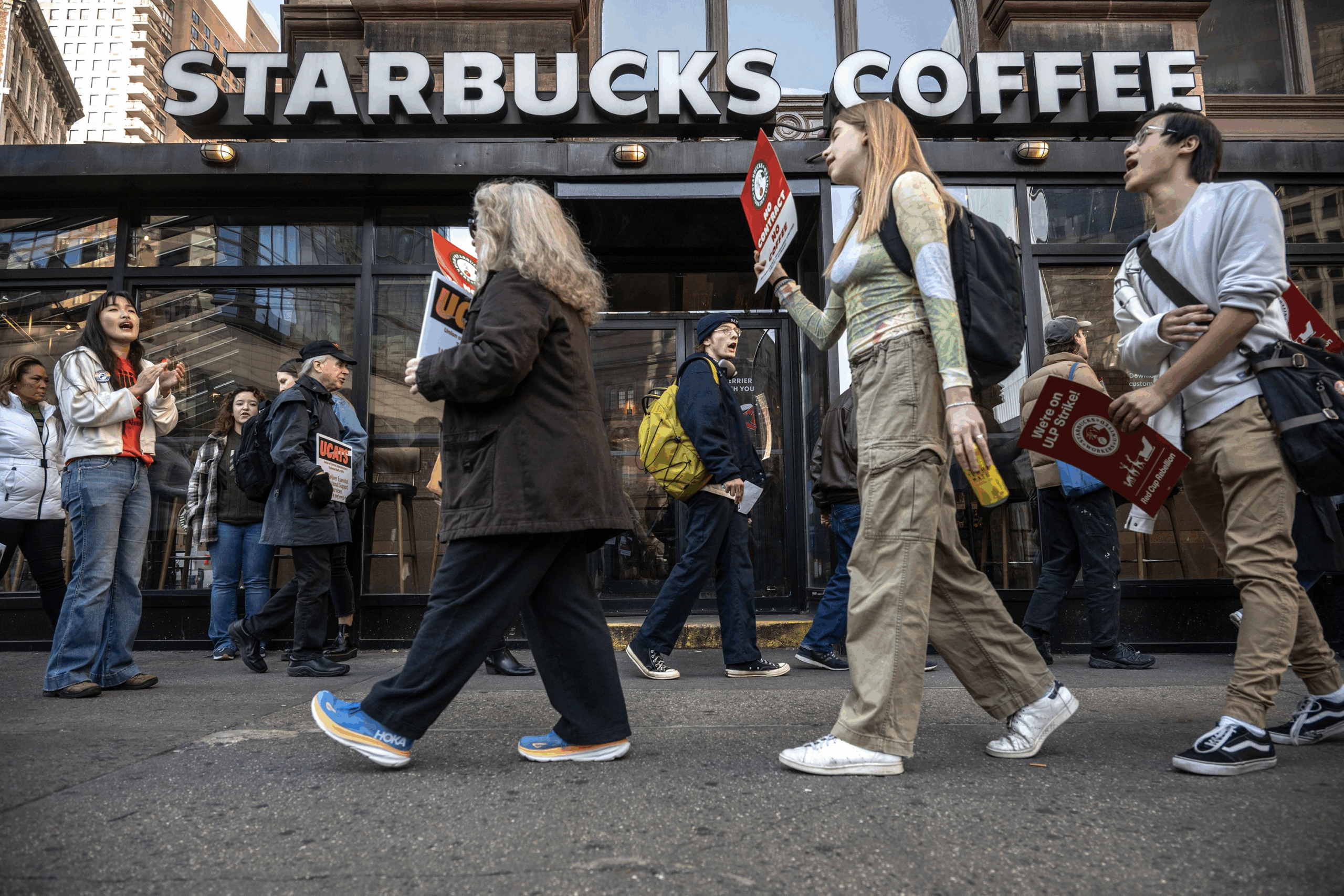Baristas protest new uniform policy, citing cost, identity, and ignored negotiations
Baristas Walk Out Over Uniform Changes
More than 1,000 Starbucks workers began striking on Sunday, May 11, 2025. By Thursday, May 15, that number grew to over 2,000 across 120 U.S. locations. The protest targets Starbucks’ newly enforced dress code, which took effect on May 12.

Baristas must now wear solid black shirts and khaki, black, or blue denim pants under their green aprons.
New Look, New Costs
Workers argue that the policy is more than a style update—it’s a financial burden.
Starbucks provided two free black T-shirts to each employee. But many baristas, especially those working multiple shifts a week, say that’s not enough. They’re now forced to purchase extra clothing out of pocket.
Union delegate Michelle Eisen stated, “It’s not just a shirt—it’s money we don’t have.” Many workers say their wages don’t cover this added expense, especially without guaranteed hours.
Uniform vs. Identity
The previous dress code, relaxed in 2016, allowed navy, gray, dark denim, brown, and even patterned shirts.
Baristas used these options to express themselves and feel more comfortable at work.
Now, many feel that individuality is being erased. Gen Z workers in particular say the change limits personal identity. Social media posts on X describe the policy as “stifling,” “robotic,” and “controlling.”
No Seat at the Table
Starbucks Workers United, representing around 11,000 employees at 570 stores, says the change violates labor protocols.
The union claims the company bypassed ongoing dress code negotiations. A tentative agreement was in place, but Starbucks implemented the policy unilaterally.
A formal complaint has been filed with the National Labor Relations Board. Union representatives call the move “regressive” and say it violates collective bargaining rights.

“This isn’t how negotiations are supposed to work,” said union member Jasmine Leli.
Focus on What Matters
Baristas argue Starbucks has misplaced priorities.
They say the company should focus on fixing understaffing, improving slow service times, and offering stable hours.
“Customers don’t care what color our clothes are when they’re waiting 30 minutes for a latte,” said Paige Summers, a shift supervisor from Maryland.
The union maintains that a new dress code won’t fix customer experience. More staff and better equipment would.
Corporate Disconnect
The new policy is part of CEO Brian Niccol’s “Back to Starbucks” strategy.
It aims to revitalize the brand through a cleaner, more consistent aesthetic. The green apron is meant to be the visual focal point.
But many baristas and union leaders say this focus ignores what customers and workers actually need.
Social media posts on X and Reddit show support for the workers. Customers say they care more about service and coffee quality than uniform colors.
“It’s a marketing move, not a morale boost,” wrote one Reddit user.
Starbucks Defends Policy
Starbucks says the new rule simplifies expectations and strengthens brand identity.
They claim that over 99% of stores remain open, despite the strike.
The company also says that the union should focus on contract talks—not shirts.

Some store managers, like Seattle’s Maddie Mucklow, support the change. She said the look helps with professionalism but admitted it was hard for her team to adjust.
Critics of the strike say the dress code is reasonable.
They point out that most retail jobs require similar uniforms. The policy allows for a range of shirt styles—crewneck, collared, or button-up—and includes different pant colors.
Starbucks also provided free shirts to help employees comply.
More Than a Uniform
This dress code dispute reveals deeper tensions.
It’s about worker rights, company priorities, and who gets a say in decision-making.
Baristas want respect, fair wages, and a voice in the workplace.
Right now, the green apron still shines. But the people wearing it are demanding more than visual consistency.
They want to be heard.
Our Visitor






 Users Today : 158
Users Today : 158

